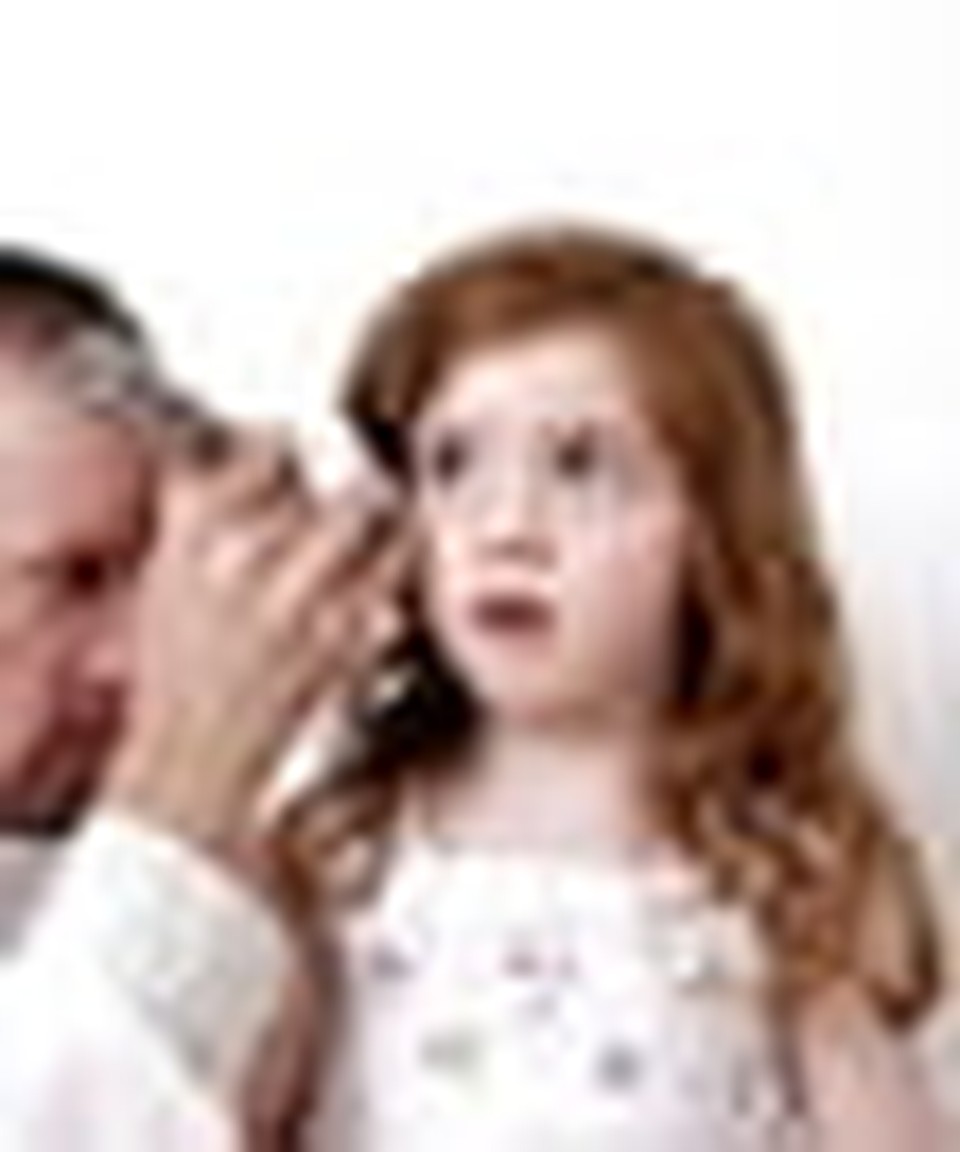Impact of Ear Infections on Learning and Behavior

“Ninety per cent of children with hyperactivity studied gave a history of three or more ear infections...,” according to a study published in the May 1997 issue of Clinical Pediatrics1. In a 1987 article in Parents Pediatric Report, researchers stated, “Ear infections and their effect on language development are prominent topics in pediatric literature. Hyperactivity is another item of great interest.... On the surface they seem to be two unrelated entities. But could there be a connection between these two conditions? Very much so, says a study from the University of Colorado in Denver, and Yeshiva University in New York.2
Early childhood ear infections, which plague many of our children, often succeed in administering an effective, “one-two punch” to a child. First, the subsequent, repeated use of antibiotics to clear up the infection upsets the child’s natural intestinal ecology, resulting in an irritated nervous system. Second, infection and inflammation of the ear often cause some damage to the “cilia” of the ear, the tiny hairlike structures of the ear that help transmit sound, affecting both language abilities and auditory processing.
These effects can be felt throughout a child’s school career. However, once the cause is established, many natural things can be done to greatly reduce and eliminate these problems.
Effects of Repeated Antibiotic Use
We are very grateful for the discovery of antibiotics. Their timely use has saved many lives. However, the multiple uses of antibiotics, particularly the use of broad-spectrum antibiotics, tend to sterilize a child’s intestines, eliminating the good bacteria while feeding the naturally occurring yeast in the intestines. This causes an upset balance in the ecology that directly affects a child’s nervous system.3 Some books that explain this process in more detail are Help for the Hyperactive Child by William Crook, M.D. and Superimmunity for Kids by Leo Galland, M.D. It is not unusual to see this upset ecology manifesting itself as problems with learning or with behavior.
The learning problems associated with this condition tend to be poor memory, difficulty with sustained attention (often seeming “spacey”), and difficulty understanding new concepts. Behavior problems that are frequently reported are hyperactivity, anger, moodiness, irritability, or inappropriate behavior, such as talking too loudly or invading others’ space regularly.4 In my experience working with bright but struggling students in special education and regular education programs, I have seen many children exhibiting these symptoms. Some of the children are placed on medication to help with focusing. Others are labeled with a learning disability, often with an auditory or language processing dysfunction.
As I have studied the files of this diverse group of children, however, I have often found a common link. I found that many of them suffered with many ear infections as young children. I also found that even more of the children have some type of allergy. As we know, after sustained antibiotic or steroid use, there often is an accompanying yeast/fungus overgrowth that goes unrecognized. When yeast overgrowth is an issue, the child often develops a “leaky gut,” which often leads to the development of common food allergies. The most common offending foods, in the case of ear infections or bed-wetting, are milk and milk products.
I have seen so many children’s “learning and behavior problems” respond to simple interventions such as a six-week trial elimination of dairy products (not one teaspoon), along with replacing some of the missing good bacteria in the intestines.56 It is not hard to replace the good bacteria that antibiotics have reduced or eradicated.
To replace the good bacteria, a parent can simply buy a product in a health food store that contains the good bacterial strains, acidophilus and bifidus.7 Although these good bacteria are present in yogurt, it is present only in very small amounts. When purchasing a more concentrated form of these good bacteria as a supplement, buy a brand that is refrigerated in the health food store, since these are live bacteria.
These products can be purchased in capsule form and placed in juice or cold food without altering their taste. The liquid and chewable forms of this supplement are far less viable. Parents report to me that giving their child this natural beneficial bacteria three times a day often results in a reduction in temper tantrums, less irritability, better concentration, and a more cooperative child. They report that administering beneficial bacteria only once a day, even if the label says that is enough, does not result in behavior or learning changes. This is a very consistent report we get from parents across the country. Reducing sugar and carbohydrate intake (pancakes, cereal, juice, granola bars, etc.) also makes a noticeable difference in behavior.
Effects on Language and Auditory Processing
One of the results of multiple childhood ear infections can be difficulty with language and auditory processing. These children have difficulty distinguishing certain sounds. Sometimes this difficulty with the discrimination of individual sounds can present itself as a speech problem or in learning phonics. Both their reading and their spelling are affected.
It also affects the way that they are able to listen. We frequently accuse our children of having “selective hearing,” meaning that they choose to listen to things other than their parents. This can be the case, of course, but because of the amount of energy the process of listening and storing auditory information requires, the child can do only so much listening before he tunes out as a result of the overload. At times these children are inaccurately diagnosed as being ADD (attention deficit disorder), when actually their attention is dependent on the amount of auditory processing that is required in a situation.
These children often have difficulty sequencing, as represented by repeating a story with the events placed in proper order. They also have difficulty hearing their own internal voice, preferring to read aloud to understand information. Tasks that require alphabetizing are particularly onerous to them, as they have to repeat the alphabet over and over to themselves in their heads. They often do anything to avoid this type of task.
What are some things that we can do to help a child who suffers with these kinds of problems as a result of multiple ear infections? We can teach him in a more visual manner, using pictures for clarification and teaching phonic sounds (called phonemes) with the letter combination superimposed on a picture that gives that sound. We can teach him right-brain strategies such as visualizing a word to more easily memorize its spelling. We can teach him math facts using funny stories and pictures, using his right brain to store them rather than the rote learning that the left, auditory brain hemisphere enjoys. And we can use natural vitamin supplements to help heal the auditory system.
As mentioned earlier, the “cilia” of the ear are affected by multiple ear infections. In his book, Feed Your Kids Right, Lendon H. Smith, M.D., the famous “baby doctor,” states that the highest concentration of vitamin A in the whole body is in the cilia of the ear. After multiple ear infections, the store of this vitamin is greatly depleted. Often these children hear noises in their ear that are very distracting to them.8 Knowing that a deficiency of essential fatty acids is often found in children who suffer from learning disabilities, we can supplement them by using some orange-flavored cod liver oil, which is a good source of both vitamin A and essential fatty acids.9
Although the impact of multiple childhood ear infections on a child’s learning and behavior can be large, it does not have to be permanent.
Endnotes:
1. Clinical Pediatrics, May 1997
2. Parents Pediatrics, August 1987
3. William Crook, M.D., Help for the Hyperactive Child
4. Leo Galland, M.D., Superimmunity for Kids
5. Mary Ann Block, M.D., No More Ritalin
6. Mary Ann Block, M.D., No More Amoxicillin
7. Always check with your health professional before starting any vitamin or exercise program.
8. Lendon H. Smith, M.D., Feed Your Kids Right
9. Questions? Email Dianne at craft@ecentral.com
Dianne Craft has a master’s degree in learning disabilities. She speaks widely at homeschool conventions across the country. Her books, Brain Integration Therapy Manual, Right Brain Phonics Program, and her DVDs, Understanding & Helping the Struggling Learner, Teaching the Right Brain Child, Smart Kids—Who Hate to Write, and The Biology of Behavior have helped hundreds of families remove learning blocks in their struggling children at home. Visit her website, www.diannecraft.org, for many articles on children and learning and to download her free Daily Lesson Plans for the Struggling Reader and Writer.
Copyright 2012, used with permission. All rights reserved by author. Originally appeared in the June 2012 issue of The Old Schoolhouse® Magazine, the family education magazine. Read the magazine free at www.TOSMagazine.com or read it on the go and download the free apps at www.TOSApps.com to read the magazine on your mobile devices.
Publication date: June 28, 2013
Originally published June 28, 2013.







